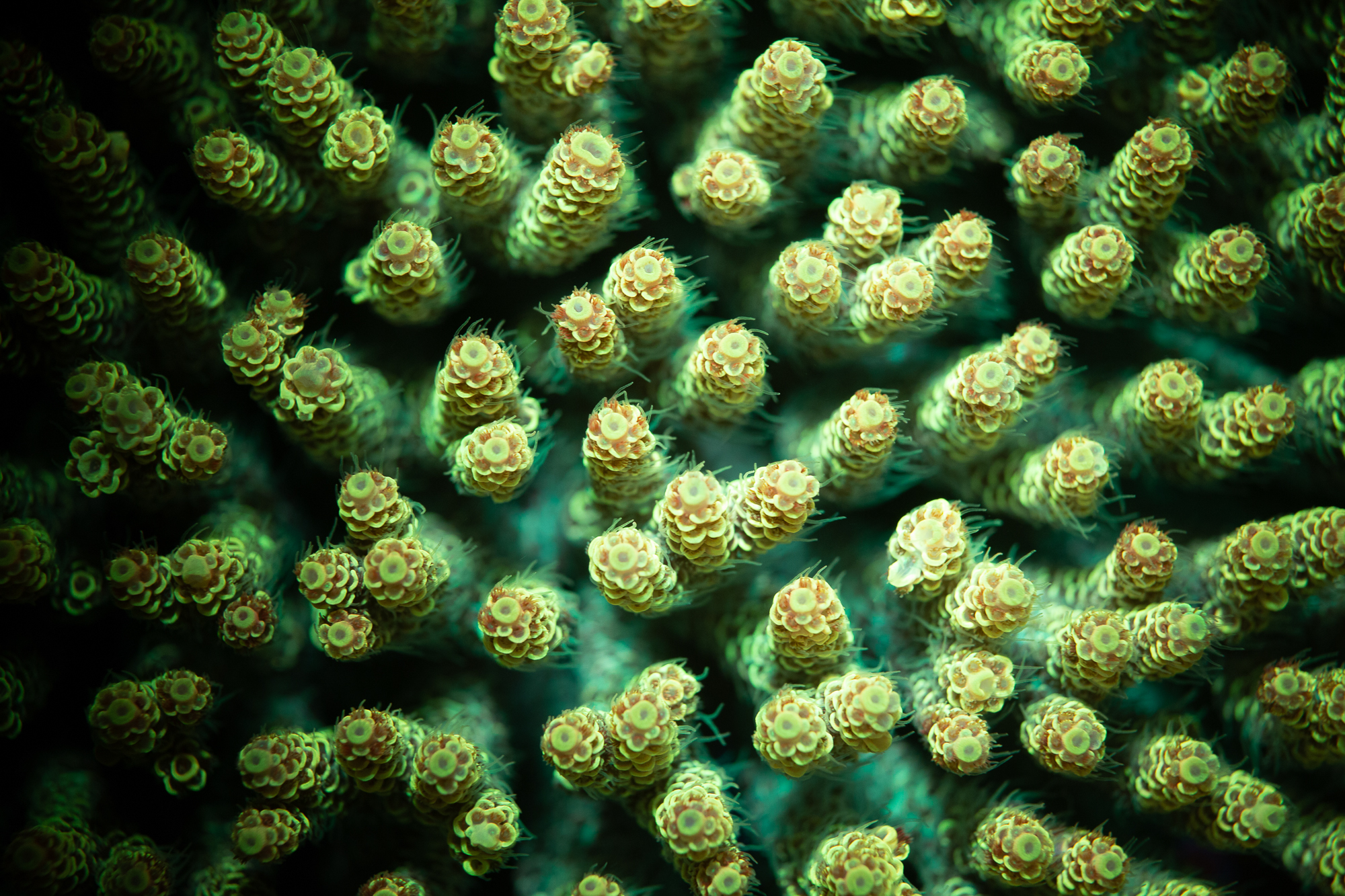The feeding habits of reef-building coral Mussismilia hispida

Autotrophy VS Heterotrophy
An autotrophic organism is able to synthesize its own organic matter from inorganic mineral elements. If it uses the light energy of photosynthesis, it is called photoautotrophic.
Heterotrophic organism synthesizes its own organic matter from exogenous organic matter.
Mixotrophy is the trophic mode of organisms capable of feeding by autotrophy as well as heterotrophy.
The reef-building corals
Reef-building corals produce calcium carbonate structures (Vytopil & Willis 2001) which provide shelter, food resources and reproduction sites for other species (Hixon & Menge 1991).
Most reef-building coral species live in symbiosis with photosynthetic microalgae (Stat et al. 2006; Venn et al. 2008). Apart from providing the majority of its photosynthetically fixed carbon to the host (Muscatine et al. 1981; Muscatine 1990), these microalgae also facilitate the deposition of calcium carbonate (Muscatine 1990; Furla et al. 2000; Colombo-Pallotta et al. 2010).
For many years, reef-building corals were considered dependent primarily on photoautotrophy performed by the microalgae (Muscatine & Porter 1977). However, photosynthetic products may be deficient in nitrogen, phosphorus and other elements essential for growth and reproduction of the coral (Mies et al. 2018). The latter need to be acquired through a different feeding mechanism (Battey & Patton 1986; Ferrier-Pagès et al. 2003). Several studies have confirmed that most coral species can also be heterotrophic, preying on zooplankton (Porter 1976; Sebens et al. 1996; Palardy et al. 2006; Houlbrèque & Ferrier-Pagès 2009) and that this input can be necessary for optimum growth (Grottoli & Wellington 1999; Houlbrèque et al. 2003).
Study of feeding predominance in corals
Many species of reef-building corals are mixotrophic, relying on both photoautotrophy performed by their symbiosis with microalgae and heterotrophy from consumption of zooplankton (Mies et al. 2018). Both of these feeding habits supply corals with essential lipids (Crossland et al. 1980; Grottoli et al. 2006).
Among these latter, fatty acids are particularly useful to identify food resources in reef-building corals (Treignier et al. 2008; Dodds et al. 2009).
Indeed, the presence of specific fatty acid in coral tissues may be traced back to the photosynthetic contribution of the microalgae, while other fatty acids may be specific to heterotrophy, such as those produced by crustacean zooplankton (Dalsgaard et al. 2003; Dodds et al. 2009), prey of reef-building corals (Sebens et al. 1996).
Certain factors such as light intensity, temperature and food availability may regulate the intensity of autotrophic and heterotrophic behavior in reef-building corals (Clark & Jensen 1982; Palardy et al. 2005, 2006; Ezzat et al. 2016).
Recently, a study investigated whether the reefbuilding coral Mussismilia hispida, endemic to Brazil, is able to shift between predominantly autotrophic and predominantly heterotrophic (Mies et al. 2018). To do so, they monitored the concentration of specific fatty acids, as well as microalgae concentration in the coral tissue each month during a year (Mies et al. 2018). They also examined whether shifts were related to changes in temperature and wind stress (Mies et al. 2018).
The major finding of this study was the fact that shifts of predominance occurred multiple times during the year and were associated with minimal temperatures and wind stress (Mies et al. 2018). Indeed, during summer, coral colonies underwent a microalgae concentration decrease related to coral bleaching which they seemed to compensate with heterotrophic feeding (Mies et al. 2018). In colder months, the opposite trend was observed (Mies et al. 2018).
The external elements, whether biological or climatic, have an influence on the corals feeding mode. The results of this study therefore demonstrate a feeding flexibility in M.hispida, explaining its wide latitudinal distribution. This specificity would be interesting to explore to better understand the adaptation of corals to climate change.

